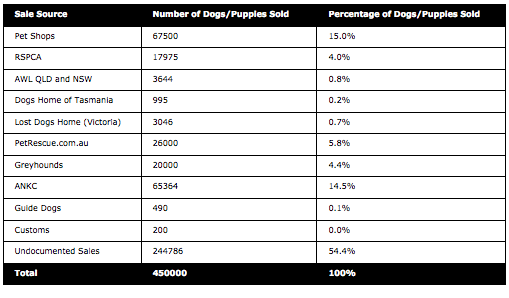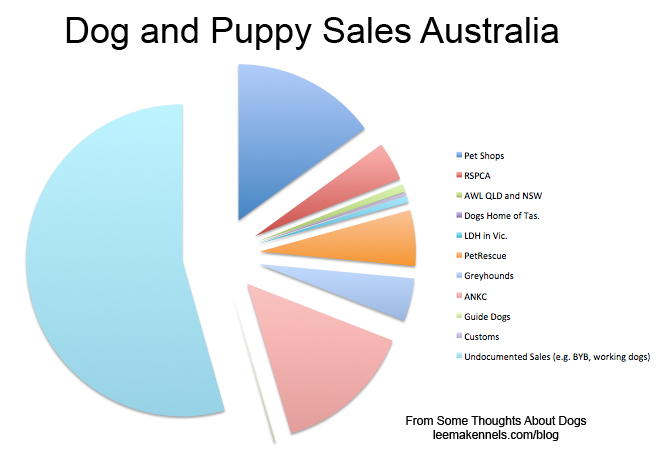Are you willing to be wrong about that?
Full credits to Saranimals on the great title on this post. Sara blogged “Are you willing to be wrong about that?” in regard to dog training. I instantly knew I needed to create this sequel on ‘the overpopulation problem’.
You’ve probably heard that there is an overpopulation problem; that there are too many dogs and not enough homes.
But, how do you know this?
And, are you willing to be wrong about that?

Read on, or listen to the audio. (Audio only summarises the blog post and does not contain new information.)
The common figure quoted is 250, 000 dogs and cats are killed in shelters in Australia annually. While I question the accuracy of this figure (i.e. I think it’s actually quite inflated), for the purposes of this article, let’s run with it as there are no alternative figures available.
We know the RSPCA has high kill rates (except in the ACT), but I’m going to use their statistics for making a guess on how many of those 250,000 pets killed in Australian shelters are dogs. By using the RSPCA’s stats, we are probably over-stating kill rates, but I rather be using a figure that is too big than too small.
The RSPCA, Australia wide, killed 37,862 dogs and cats in the 2011/2012 financial year. 14,211 dogs and 23,651 cats. That is, 37.5% of them were dogs.
So, if we extrapolate that 37.5% of the 250,000 animals killed in shelters are dogs, then that means 93,750 are dogs.
We will start with the theory that 93,750 dogs are being killed in shelters in Australia each year.
This is a rough, and probably generous, estimate.
Australia has over 23 million people. (ABS)
This means, that if 0.4% of the Australian population adopted just one dog from a shelter, then there would be no dogs being killed in shelters.
Consider that 450,000 dogs and puppies are sold in Australia each year (source: ACAC paper 2009 PDF). 2% of Australians add a dog or puppy to their family each year as it stands. With 90,000 extra dogs available, we just have to bump this figure up to 2.4%.
If we could sell dogs through marketing to just 90,000 Australians (that’s a town the size of Toowoomba or Bendigo), we would effectively remove the need to kill dogs in shelters.
There are about 3.4 million dogs (3,400,000) owned in Australia (source: ACAC). This is significant because:
- For every 362 dogs owned in Australia, one dies in Australia. That is, less than .3% (point three percent) of Australian dogs die in shelters each year. While it adds up to a big number, it’s not much of the total population. There’s not many irresponsible owners out there, really. It’s an important point to remember.
- Estimates say that about 10-13% of dogs die each year from natural causes. That means that 340,000 people have a ‘vacancy’ in their lives for a dog on an annual basis.
- There are also a number of new vacancies as people move into new accommodation or decide to add a second dog to their family.
- 19.61% of households who don’t own a pet want to in the future (Source: RSPCA).
So, considering all this, I’d argue that rehoming 93,750 dogs is a very achievable target.
However, I have some good news: We don’t even have to rehome 93, 750 dogs.
Dogs are typically owned by people. While it is common for cats to live in free-ranging communities and never have a true owners, dogs are not the case. When a dog becomes lost, typically, there is a home trying to find them.
So the good news is that we can try to get these 93,750 back to their original home instead of into a new home. Shelters can:
- As pets enter their facility, post (good quality, clear) pictures of their pets online, such as on:
- their facility’s Facebook page,
- Gumtree
- DogzOnline, and
- lost dog pages like Lost Dogs of Adelaide.
- Peruse the lost dogs notices in the local newspapers and on online sites, like those listed above.
- Partner with local publications to get the photos of every impounded animal in print.
- Use the details on the dog’s collar or tag to identify and contact the owner.
- Scan the animal for a microchip and use the details to contact the owner.
- If the name of the owner is known, but contact details are not up to date, pursue alternative ways to make contact (like using the electoral role.)
It’s hard to know exactly how many dogs could go home if the shelters invested this effort into finding their old home for them to go to.
Many argue that there is an overpopulation of dogs because dogs are dying in shelters. This is not evidence of an overpopulation problem. Shelter killing is the result of shelters killing. Shelter killing is a choice that shelters make. While shelters often claim “No one wants to kill pets“, they then make choices in contradiction to this. They choose to not actively pursue reclaims, they choose to not market animals to get them into new homes, and, then claim they have no choice but to kill their charges.
Australian shelters commit three great crimes:
- They do not attempt to reunite pets with their families,
- They do not attempt to find pets new families, and
- They then kill pets who fail to find existing or new families.
Clearly, there are very few dogs that enter Australian pounds, very few dogs who don’t have a home to go to, and, at the same time, an abundance of homes looking for a new dog.
We do not have an overpopulation problem. We have a shelter problem. If we want to see less shelter killing, we need to demand shelters get over the myth of overpopulation.
–
This post has been brewing for a long time, and I felt that I really could not articulate this as well as no-kill blogging stars Shel (at Saving Pets), Nathan Winograd (at his self-titled blog), or Christie Keith (at the Dogged Blog).
As such, I really suggest you read more on the links (below) to get a more complete view of the issue.
Further reading:
Why shelter killing has nothing to do with pet overpopulation (The Dogged Blog)
The Lie of Pet Overpopulation Continues
The First 60 minutes: Animal Sheltering’s Critical Hour (KC Dog Blog)
Shelter ‘overpopulation’ a function of design (Saving Pets)
Do The Math (Nathan Winograd)
How to find a dog at the shelter
Debunking Pet Overpopulation (Nathan Winograd)
Pet Overpopulation Myth (ThatMutt)
The Kobayashi Maru (Nathan Winograd)
Is pet overpopulation a myth? Inside Nathan Winograd’s book
The Seven Deadly Sins of ‘Overpopulation’ (Saving Pets)
Overpopulation Disguises the True Cause of Shelter Killing (Saving Pets)
Shelter Killing Benefits Puppy Mills (Nathan Winograd)


